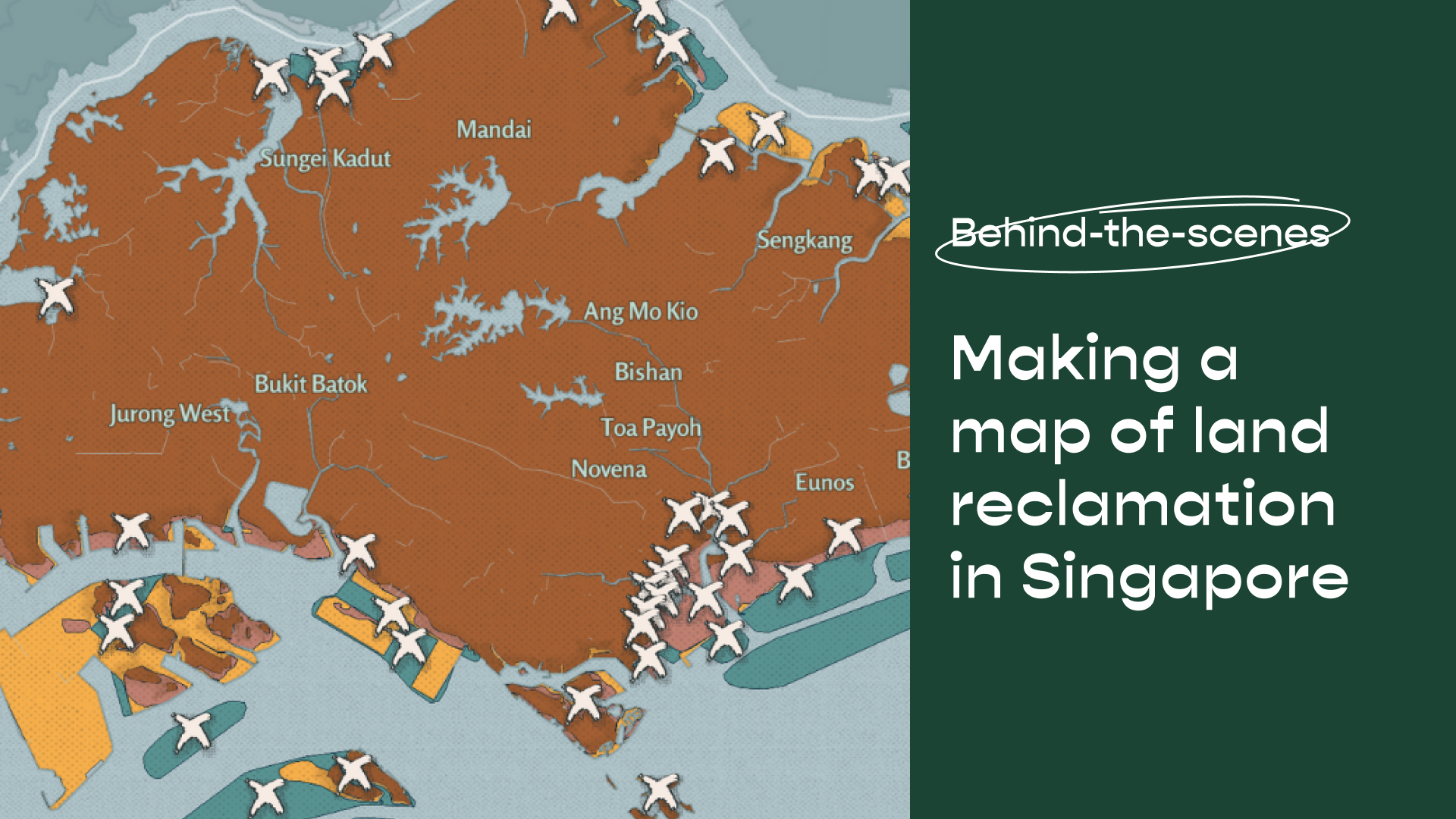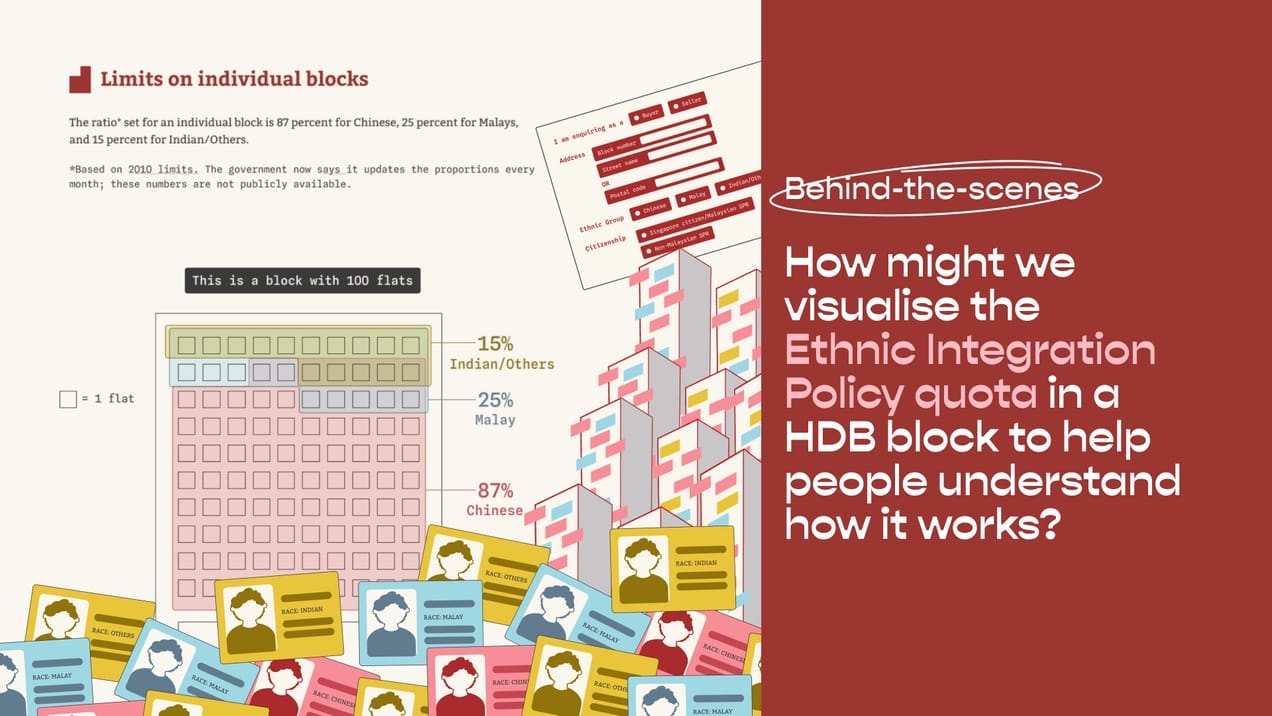
Making a map of land reclamation in Singapore
How familiar are you with the shape of the land(s) you call home? On the map, most of us identify Singapore as a little red dot, or a diamond at closer view. In our recent story on sand mining and land reclamation, we created a map to examine the complex shapes that make up Singapore land.
Our map presents two levels of information. Clicking on x-shaped pins provides greater detail on individual reclamation projects. This article focuses on how we created the first level of our basemap and its colour legend, showing changes to Singapore’s borders over time. With limited data on reclamation, how did we navigate the challenge of tracing Singapore’s borders—by conjoining a few maps, whose authority we started to question?

PHASE 1: DATA COLLECTION
Our goal was to visualise a comprehensive timeline of land reclamation in Singapore that was as complete as possible—spanning from the earliest documented project before independence, to the most updated plans for the future. However, we quickly realised that there was no existing map that covered the full extent of our desired timeline, and so we stitched together data from four different maps, each analysing different periods in Singapore’s past, present, and future. This was however more challenging than expected, due to the discrepancies we found across the datasets. Even amongst verified government sources, reclamation projects were identified by different location names, years and land areas. It was just as difficult to ascertain the reliability of data on several projects, for which we could only find one source.
Working with maps that had been produced for different contexts, we were attentive to how each of them plugged gaps for certain data points, but presented unique constraints in others. We elaborate more on how their different data formats and resolutions affect choices made in the next section on data analysis.


